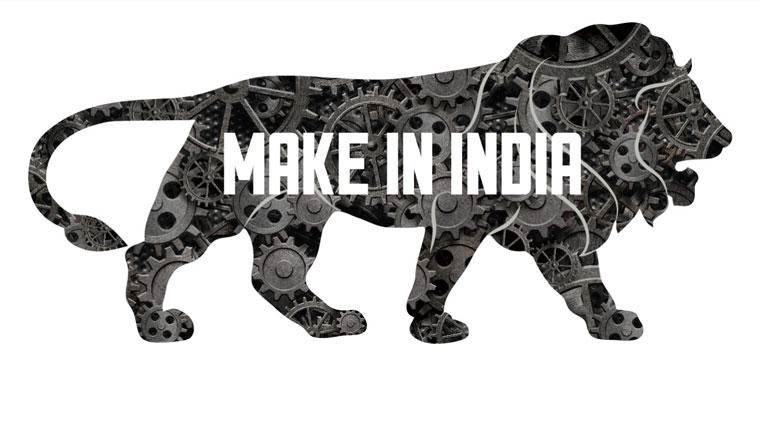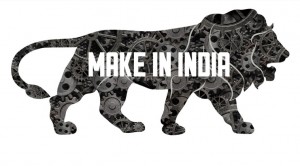Prime Minister Mr. Narendra Modi had launched the “MAKE IN INDIA “campaign on the 25th of September,2014 in the presence of eminent Indian industrialist. The initiative taken by him has been to promote a culture of trust, transparency among industrialist so as to facilitate the process of doing business in the country. This initiative bolsters to put India in the global manufacturing map, help in the inflow of technology, capital and in the process create millions of job for the Indian youth.
In order to establish itself firmly as a superpower and be self reliant, India needs to be committed to the cause of Indian manufacturing. Like the initial few years after Independence, the current government has to focus heavily on improving the quality of Indian made goods to compete in a world which is becoming increasingly competitive. This is the right opportunity as after two decades a party has come into power with absolute majority.
When we look at other developed countries like Germany, Japan, USA the industry and the services sector contribute roughly 25% and 70% respectively. In comparison the contribution of the industry and services sector is around 16% and 64% respectively. Out of the 487 million labour force in the country, industry and services sectors contribute 20% and 31% respectively. Compare this with China which with its huge workforce population of 786 million people has roughly 30% contribution from the manufacturing industry. Every year 10 million people join the workforce and to provide them with jobs is a mammoth task in itself. The answer can only be provided by the manufacturing sector.
According to the latest World Bank reports India stands at a dismal 142 out of 184 countries surveyed in terms of ease of doing business. Even in Mumbai the trade capital of the country required 13 procedures to start a business, and it took 30 days to accomplish this, compared to an average of 4.8 procedures and 9.2 days in advanced economies. This easily highlights the mammoth task in front of the Government. The Government has identified 25 sectors to like textiles, leather, hardware mining ,aerospace ,defence, military which are strategic as well as a large number of people are employed. This policy comprehensively tries to address the issues like regulation, skill development, technology inflow, infrastructure, capital inflow, taxes and exit mechanisms.
In a bid to make India attractive to the outside world the Prime Minister has lifted caps on various sectors like defence, insurance telecom, and power. India is the largest military equipment purchaser in the world. Last year India spent 6 billion US$ on purchasing military equipments. This deals with a lot of commissions and kickbacks for the middleman and leads to corruption and beauracracy in the government. In a bid to compete with USA and China in its military might, India`s defence outlay is going to increase substantially. Even with such a favourable market existing there is absolutely no supply from the local markets barring some local made ballistic missiles. This is an ideal time to establish India as an alternate location for defence equipment manufacturing. The role of the private players is critical and they have shown a keen interest in investing. Companies like Tata group, Reliance, Punj Lloyd and Mahindra which were facing problems following government norms has now with the new norms invested heavily in weapons manufacturing. The focus has been given to manufacture rocket launchers, combat vehicles, torpedoes, submarines. One of the big ticket moves was the making of submarines by Larsen and Toubro at a cost of 50,000 crore in India, which otherwise would have to be imported from outside.
One more major sector to be benefited from the reforms will be the oil and gas sector. India imports most of its fossil fuel consumption from the outside world and this puts a huge burden on the economy. Strategic investing in new technologies and newer methods of oil and gas drilling can help India to reduce its dependence on foreign imports. Venturing into unconventional energy sources like coal bed methane will also help.
The current account deficit which is forever increasing and is a burden on the economy will substantially be reduced by these steps.
In order to compete with the rest of the world our Prime minister has talked about the three “D “s which India has: Democracy, Demographics, and Demand. Our country is in dire need of employable people as the industry leaders often points it out. Many of the youth are not industry ready because they do not have a practical knowledge of the industry. Although we have a vast pool of engineers and technical scholars and researchers, the amount of technical innovation emancipating from our country is very low. The education system is to be revamped in order to promote a culture of practical, in-hand learning, rather than learning only from books. The complete lack of apathy and lethargy of the private/public sector is also to be blamed for the lack of employable skills in today’s youth. The number of apprentices, in India is abysmally low compared to the number of apprentices in global manufacturing hubs like Germany. Having a practical training parallel with the theoretical learning will help in a better understanding of the concepts. In order to fully utilise the huge demographics of 65% population below the age of thirty five, reforms in education sector is must. Only then India will be able to provide quality product and workforce to the world.
One of the major obstacles faced in India by any industry is labour problems and land acquisition. While there is no doubt in my mind that promoting Indian manufacturing is the way forward for the economy, one often ponders how the government is going to tackle these sensitive issues. Certain archaic laws needs to be changed, but the worker class needs to be made a part of this change. They should not be left out while framing the laws that are going to affect them the most. The worker class with their collective bargaining techniques and sometimes militant attitudes have only thought about the social upliftment of the poor. While militant outlook cannot be encouraged for a healthy work environment, they need to be made shareholder in progress and educated about the pros and cons of successful business. Private organisations and trade union can take a leaf out the page of trade union of Bajaj Auto movers. The trade union has decided that whatever is the problem with the management, work should not stop and the brand image should not be tarnished. Even sensible people who are righteous in their work are only elected as trade union representatives.
Our country has democratic style of governance and hence it becomes much more crucial to ensure holistic development of the society. Unlike China we cannot go ahead with an iron fist, we need to be sensible while going for land acquisitions and ensure that the final yield of a project supersedes the loss to the land looser or the environment. Having a suitable and uniform land acquisition policy and creating a land bank according to the fertility of soil nature will help reduce a lot of problems. Many a times industry personnel are not ready to go to remote places; connecting these remote barren lands and providing the suitable infrastructure for industry becomes the responsibility of the Government.
According to Arvind Subramanian, the Chief Economic Adviser India needs to grow at the rate of 8 % for the next twenty years to provide jobs for the entire population. This is not a small task and requires far sightedness from the current and subsequent governments. To ensure long term growths and build a nation which is sustainable as well as self reliant, India needs to take strong measures. “MAKE IN INDIA” is one of the correct initiatives undertaken in this respect. Whether this will just remain a slogan or will we see real concrete commitment from the government will be a thing to be seen in the future.





17 Comments. Leave new
Nice article
Commendable work!
The post is really informative and impressive. It gives a clear picture of the new policy- Make In India. I believe that this policy can give a big push to the Indian economy. Nonetheless, the time will tell for that matter. Keep up the good work. (Y)
Good concept..!
keep it up!!
Nice article. The way you have explained the targets yet to be achieved by India by comparing its performance with prospective countries is commendable.
Well explained…we need to apply this concept at large level…and modi ji is really..doing that ..keep writing awesome work;)
Very well explained!!! Good work
Interesting read!..Great job Debangshu
Great efforts.. very well explained..
One of the best Campaign ….. 😀
Good Work By Putting Light on this topic……
good work!
Thank You everyone for your comments!!! Please have a look at my other articles on the same page.
Nice work!!!
Good Article!
This is revolutionary
very well explained